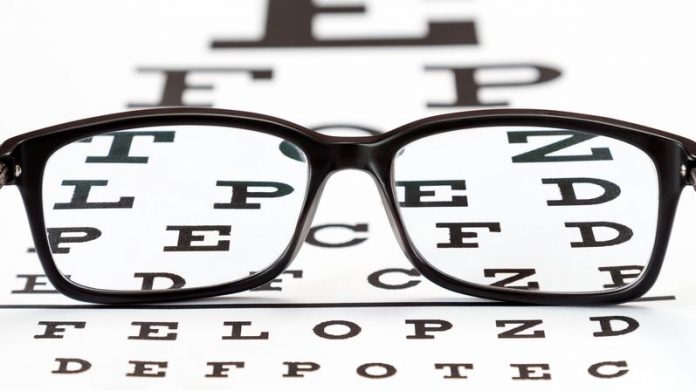What is 20/20 vision? If you possess 20/20 vision, you do not necessarily have “perfect” vision, as many people suppose.
A person with 20/20 vision has what is considered to be “normal visual acuity”, or sharpness of vision.
This is measured as the ability to recognize certain sized shapes and symbols at a distance of twenty feet thus, the twenties in 20/20.
We have all seen eye charts where lines of letters become smaller as you go from top to bottom.
The most commonly known eye chart is the SnellenChart, which has 11 lines of test letters. This chart was invented in 1862 by the Dutch ophthalmologist, Hermann Snellen.
The size of the letters on the Snellen 20/20 line were chosen because the vast majority of people are able to make them out at a distance of 20 feet. Symbols or shapes are used on charts for pre-school children or other non-readers.
20/20 is actually a comparison, a fraction made up by the distance from which you can distinguish an object divided by the distance from which a person considered to have “normal” vision can distinguish that same object.
Of course, eye chart tests are mainly useful for screening purposes. More exact testing is necessary for prescribing corrective lenses, let alone to diagnose diseases or to discover abnormalities of the eye.
Line no. 8 on the SnellenChart, counting from the top, is the 20/20 line. If you can read most of the letters on this line from 20 feet away you, too, can claim 20/20 vision.
A person with 20/10 vision can read a sign from 20 feet away that a person with normal vision could only read from 10 feet away. The 20/10 line is the bottom line, number 11, on the SnellenChart.
Most people who can “read” the bottom line of an eye chart are probably good guessers! Or they may be far-sighted enough so that it is somewhat difficult for them to read a book held at a normal distance from their eyes.
Suppose the smallest letters you can read are on the 20/40 line (line 5, three lines above the 20/20 line).
This means that you would have to come up to 20 feet in order to read what a person with normal eyesight can read at 40 feet.
Eyesight between 20/10 and 20/30 is considered within the “normal” vision range, while 20/40 vision in at least one eye is the usual minimum requirement for a driving license. Corrective lenses, if required, are allowed here (otherwise the roads would be far less crowded).
With 20/200 sight you would have to come up to a distance of 20 feet in order to distinguish what a person of normal vision can read at 200 feet. This is the top line of the SnellenChart: a big, single “E”.
Best corrected visual acuity of 20/200 or worse in the better eye is the definition of legal blindness in the United States and Canada.
Legally blind people, even those with some vision, usually qualify for tax breaks and/or help towards buying vision aids.
Metric charts normally have a progression of 6/3 to 6/30, where 6/6 is the equivalent of the English 20/20.
In other words, their “normal” test distance is 6 meters (just under 20 feet).
Testing with eye charts is really only an estimation of one’s quality of vision, and it works best for spotting nearsightedness. Farsighted people, of course, would normally have no trouble reading the 20/20 line.
Have your eyes properly tested by a qualified optometrist every year, even if you have always thought of yourself as being 20/20.
Unfortunately, there are many subtle conditions that, if left undetected, could sooner or later degrade your “perfect vision” to something seriously worse.

